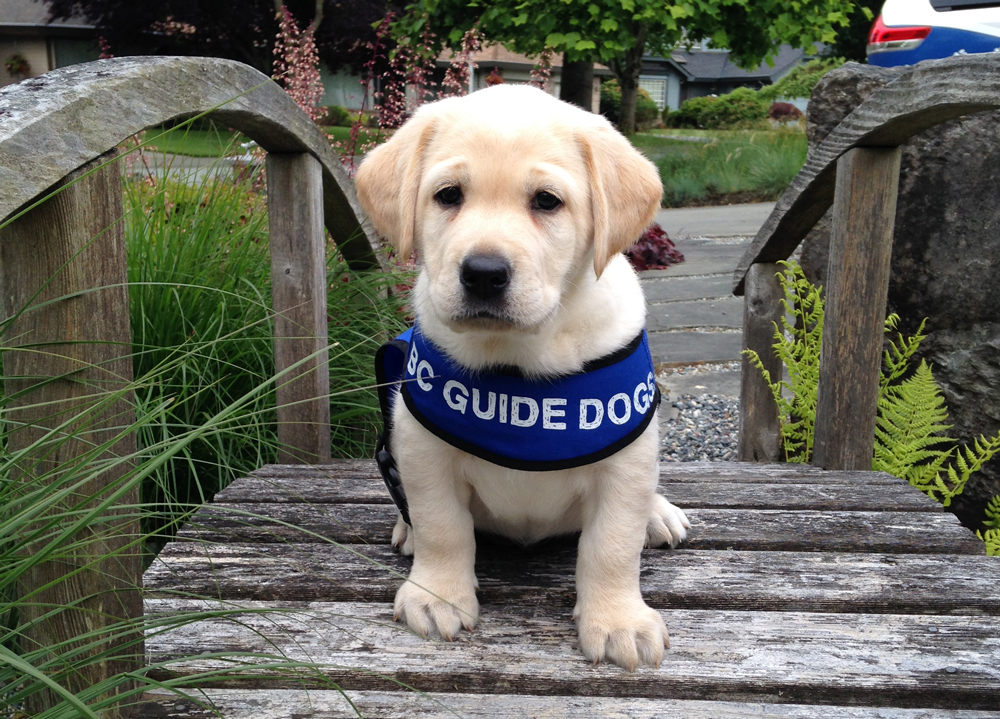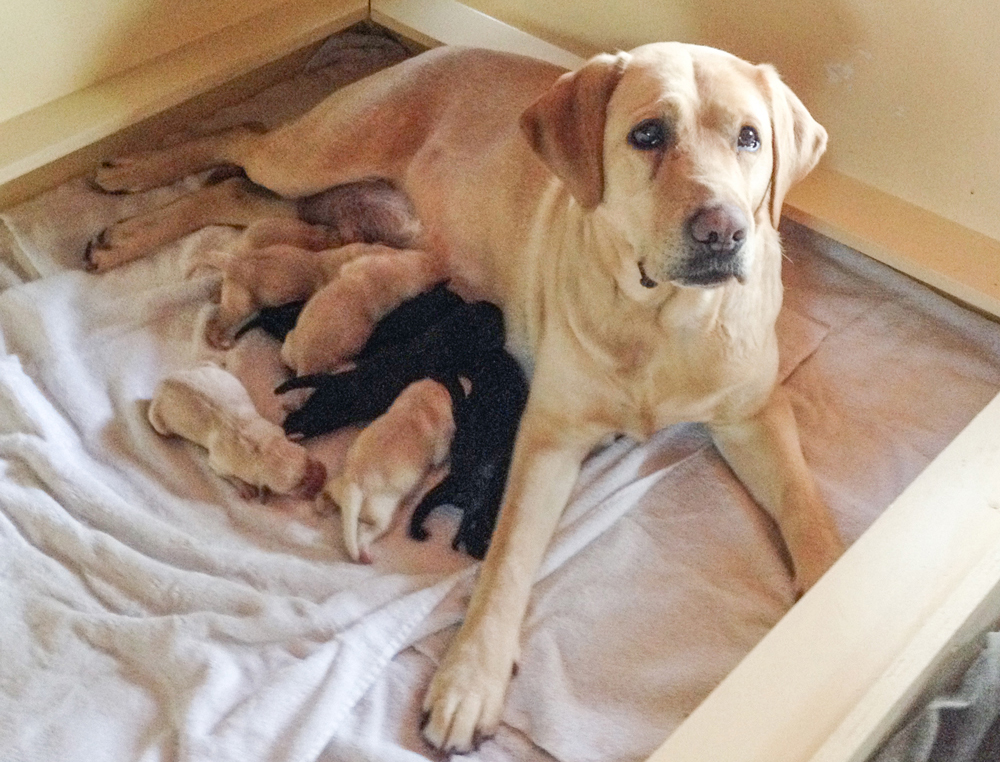Charity Spotlight: This post was provided by Coriana Constanda, Communications and Marketing Coordinator for BC & Alberta Guide Dog Services / Autism Support Dogs, as part of our ongoing charity spotlight series.
Guide dogs change the lives of blind and visually-impaired individuals in many important ways. Beyond facilitating safe navigation, guide dogs enhance their partner’s mobility and independence. You may have seen one of these extraordinary pups at the mall, on public transit, or walking down the street – but have you ever wondered how guide dogs enter their line of work?
Growing Up to Guide
BC Guide Dogs (BCGD) puppies are bred in-house and are usually Labrador Retrievers, Golden Retrievers or Lab-Golden crosses. These dogs are gentle, intelligent, energetic and good-natured, making them excellent companions and working dogs.
At 7-8 weeks of age, puppies are placed in the loving homes of volunteer Puppy Raisers. They attend obedience classes three times per month, preparing for advanced training by learning obedience, confidence and socialization skills.
Training to Change Lives
At 15-18 months old, dogs enter advanced training with a Guide Dog Mobility Instructor. This takes approximately 18 weeks, depending on each dog’s individual needs. Training includes ringing a bell when they need to go out; waiting for a whistle to be blown before eating meals; and stopping at doors, curbs/intersections, and at the top/bottom of stairs.
When dogs complete approximately 75% of their training, the process of matching them with their prospective partner begins. Once paired up, the duo trains with an instructor for three weeks, and then they officially ‘graduate’ together, starting their new life as a team.
Did you know?
1) Guide dogs start working at two years old and retire at 10 years old.
2) BC Guide Dogs has 40-60 puppies in training at any one time in Greater Vancouver, Victoria and Calgary.
3) It takes two years and up to $35,000 to breed, raise and train each dog. They are provided to the recipient at no cost.
4) BCGD has graduated 108 guide dog teams and 31 Autism support dog teams to date.
5) Non-qualifying dogs go on to live life as regular pets.
6) If a guide dog is wearing a special harness or vest, it means s/he is working and must not be distracted. You should not talk to, pet or feed a dog wearing a harness or vest.
7) When a guide dog’s vest or harness is removed, s/he is “off duty” and is like any other dog.
8) BCGD is a registered charity, not government funded, and relies on the generosity of donors and volunteers to provide its services.
9) BCGD was founded in 1996 and has two divisions: Alberta Guide Dogs and Autism Support Dogs. The latter provides support dogs for children with moderate to severe autism aged 3-10.
10) You can help a puppy become a life-changing dog! Sponsor a puppy for as little as $15 a month and get regular letters with updates and photos!
To learn more about BCGD and how you can get involved and show your support, please visit their charity profile page >>>



Leave a Reply